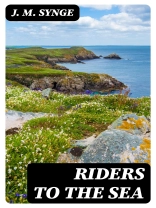In ‚Riders to the Sea, ‚ J. M. Synge crafts a poignant one-act play that delves into the harsh realities of life on the Aran Islands. Through lyrical dialogue and stark imagery, Synge depicts the struggles of a family beset by the relentless forces of nature and fate. The play explores themes of grief, loss, and the inevitable pull of the sea, which serves both as a life source and a grim adversary. Synge’s use of the Irish dialect enriches the narrative, capturing the authenticity of rural Irish life and immersing the audience in the cultural context of the early 20th century. As a prominent figure in the Irish literary revival, Synge was deeply influenced by his travels to the Aran Islands and his engagement with the local inhabitants and their traditions. His appreciation for the vernacular language and the complexities of rural existence is vividly reflected in this work. Personal experiences of witnessing the impact of the sea on people’s lives arguably informed the heartfelt narrative of ‚Riders to the Sea, ‚ making it a quintessential expression of human resilience amidst despair. Scholars and theatre enthusiasts alike will find ‚Riders to the Sea‘ an essential addition to their collections, as it embodies the spirit of Irish drama while confronting universal themes of mortality and belonging. Engaging, evocative, and tragically beautiful, this play captures the essence of Synge’s mastery, inviting readers to reflect on the fragility of life and the pull of the natural world.
Über den Autor
John Millington Synge (1871–1909) remains one of the most influential figures in Irish literature, best known for his role in the Irish Literary Revival and for his contributions to the Abbey Theatre. Born in Rathfarnham, near Dublin, Synge came from a middle-class Protestant background that afforded him the educational opportunities at Trinity College, though his studies there left him unsatisfied, prompting him to pursue music and literature in Continental Europe (P. J. Mathews, 2002). It was W.B. Yeats who urged Synge to focus on the rich traditions of their homeland, which led to the development of Synge’s unique literary voice (M. Robinson, 1994). His experiences living on the Aran Islands inspired him profoundly and shaped his most celebrated works.
His crowning achievement, ‚Riders to the Sea‘ (1904), encapsulates the power of the sea and the struggles of the people living on the Irish western coastline. It is a short, tragic play of immense intensity that brings to life the age-old human battle against the elements through the lens of an Aran Island family’s loss. Synge’s plays often drew upon the everyday speech of rural Ireland and combined it with poetic prose to create a style that was at once lyrical and grounded in the realities of peasant life. His exploration of themes such as fatalism, the power of nature, and the rural Irish experience contributed to the esteem in which his work is held within the canon of Irish drama and solidified his standing among contemporaries like Yeats and Lady Gregory (R. F. Foster, 2001). Synge’s profound influence on Irish theatre and his distinctive blend of naturalism and symbolism make his work, particularly ‚Riders to the Sea‘, an enduring study in human resilience and despair.












